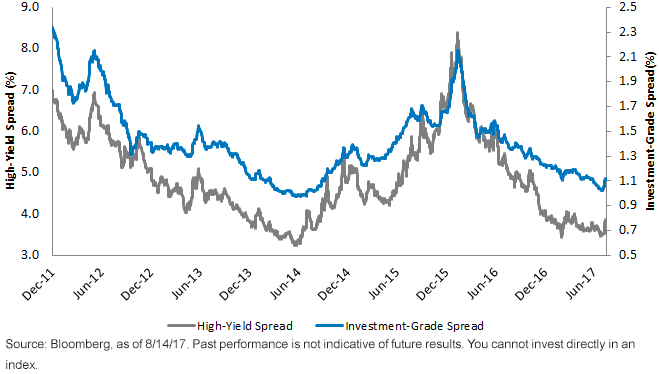U.S. Corporate Bonds: Cleanup on Aisle 5


A bit over a month into the new year, and the two asset classes whose performance stands out are U.S. investment grade (IG) and high-yield (HY) bonds. This recent turn of events is certainly a noteworthy reversal of fortune from how 2018 came to a close as both IG and HY suffered negative returns during the risk-off period of the fourth quarter. So, what should investors do with this newfound experience? In my view, fixed income investors should use this opportunity to clean up their corporate bond exposure and tilt toward quality.
Let’s take a quick look at how events unfolded. The sell-off in U.S. corporates did not end on New Year’s Eve; unfortunately, it continued right into the opening days of January. In fact, the widening in both IG and HY spreads reached their crescendo on January 3. On that day, IG spreads peaked out at +157 basis points (bps), while HY hit a highwater mark of +537 bps. These were the highest levels since 2016 and represented a total widening of +52 bps and +234 bps, respectively, from the lows in early October.
Investment-Grade Spread (RS) vs. High-Yield Spread (LS)

Over the last month or so, IG differentials have managed to come in by 30 bps, or a 60% reversal, while HY spreads have narrowed by a little more than 120 bps, recouping more than 50% of the prior widening (see graph). This rebound in U.S. corporate bonds is an interesting development in fixed income-land because it looked as if the market was at a crossroads of sorts. Indeed, would the selling pressure continue as was the case in the last widening episode of late 2015/early 2016, or would investors view this less expensive landscape as a buying opportunity? I guess we know the answer to that question now.
Conclusion
Looking ahead, the waters may not be as smooth, and investors will more than likely have to navigate unexpected swells and/or shoals. While I don’t envision a recession, a growth slowdown in the U.S. should be expected, and what were once tailwinds for U.S. corporates (Fed policy, financial conditions to name a few) have become potential headwinds. Back to our opening theme, you don’t always get a second chance to adjust your portfolio for potential pitfalls, and this recent narrowing in IG and HY spreads is offering fixed income investors just that. Looking toward the balance sheet for quality guidance will be an important tool in 2019, and WisdomTree’s fundamental fixed income strategies can help fixed income investors potentially realize this goal.
Unless otherwise stated, all data is from Bloomberg as of February 8, 2019.


